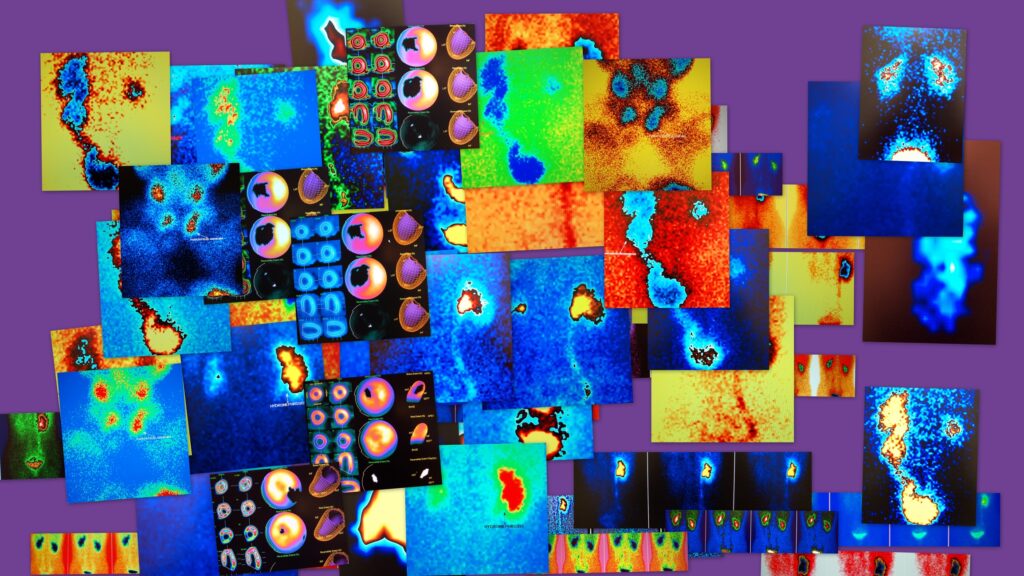Summary: Imaging-based screening has emerged as a cornerstone of modern healthcare, offering unprecedented opportunities for early disease detection and improved outcomes. This technology is used in a variety of contexts, from mammography for breast cancer to CT scans for lung cancer and beyond. However, the journey of imaging-based screening is not without its challenges. False-positive results, overdiagnosis, radiation exposure, and costs have sparked widespread debate among clinicians, policymakers, and patients alike. This article looks into the science, applications, and ethical dilemmas of imaging-based screening, providing a comprehensive overview of its potential and pitfalls.
Introduction: The Promise of Imaging-Based Screening
Imaging-based screening refers to the use of advanced medical imaging technologies to identify diseases at an early, often asymptomatic stage. It plays a vital role in conditions like cancer, cardiovascular diseases, and neurological disorders, where early detection significantly improves treatment options and survival rates. Yet, the deployment of these powerful tools raises fundamental questions about their broader implications.
The Science Behind Imaging-Based Screening
Medical imaging technologies have undergone revolutionary advancements over the past few decades, with each modality offering unique advantages in screening:
- Mammography
Widely used for breast cancer screening, mammography employs low-dose X-rays to detect abnormalities. While credited with reducing mortality rates, it is often criticised for its false-positive rates and associated anxiety. - Computed Tomography (CT) Scans
CT scans have become a gold standard in lung cancer screening. However, concerns about cumulative radiation exposure persist. - Magnetic Resonance Imaging (MRI)
MRI is highly sensitive and often used for screening in individuals with genetic predispositions to certain cancers. Its expense and accessibility, however, limit widespread use. - Ultrasound
A safer, radiation-free option, ultrasound is frequently employed in prenatal and abdominal screenings but has limited resolution compared to other modalities. - Positron Emission Tomography (PET) Scans
PET imaging, often combined with CT, excels in detecting metabolic activity indicative of cancer or neurological diseases. However, its high cost restricts routine screening.
Applications of Imaging-Based Screening
The scope of imaging-based screening spans numerous medical fields, each demonstrating the potential for life-saving interventions:
- Cancer Detection
Imaging has transformed cancer screening, with early detection proving pivotal for conditions like breast, lung, and colorectal cancers. - Cardiovascular Screening
Coronary artery calcification scoring through CT imaging enables risk stratification in individuals predisposed to heart disease. - Neurological Screening
Brain imaging technologies are advancing early detection of Alzheimer’s disease, stroke risks, and other neurological conditions. - Public Health Screening Initiatives
National screening programmes, such as the NHS Breast Screening Programme in the UK, exemplify large-scale adoption of imaging technologies to improve population health.
Controversial Topics in Imaging-Based Screening
False-Positive Results
False positives occur when imaging identifies abnormalities that are not clinically significant or are benign. For patients, this can lead to unnecessary anxiety, further invasive procedures, and potential harm.
- The Psychological Toll
A false-positive mammogram, for instance, can lead to months of stress and uncertainty for patients awaiting follow-up results. - Increased Healthcare Burden
The need for additional diagnostic procedures inflates healthcare costs and strains resources.
Overdiagnosis and Overtreatment
Overdiagnosis refers to the detection of conditions that would not have caused symptoms or harm during a person’s lifetime. While it may seem harmless, overdiagnosis often results in overtreatment, exposing patients to unnecessary interventions.
- Cancer Screening as a Case Study
Prostate cancer screening using imaging has highlighted the delicate balance between detecting life-threatening conditions and avoiding overdiagnosis of indolent tumours. - Ethical Dilemmas
The ethical question arises: is it justifiable to subject individuals to treatment for conditions that may never manifest in a clinically significant way?
Radiation Risks
Radiation exposure is an inevitable concern in imaging modalities like CT and mammography. While the doses are relatively low, cumulative exposure from repeated screenings can increase long-term cancer risks.
- Risk-Benefit Analysis
For high-risk individuals, the benefits of early detection often outweigh the risks. However, for low-risk populations, the justification for repeated radiation exposure becomes tenuous. - Advancing Technologies
Innovations such as low-dose CT and non-ionising modalities like MRI and ultrasound aim to mitigate these risks.
Cost Considerations
Imaging-based screening is inherently expensive, encompassing the costs of equipment, personnel, and follow-up procedures.
- Healthcare Inequality
Access to high-quality imaging services is often limited by socio-economic factors, exacerbating disparities in healthcare outcomes. - Economic Impact on Health Systems
National screening programmes face the challenge of balancing cost-efficiency with comprehensive coverage.
Emerging Innovations in Imaging-Based Screening
The future of imaging-based screening is shaped by cutting-edge technologies and strategies aimed at addressing existing limitations:
Artificial Intelligence (AI) in Imaging
AI algorithms are increasingly used to analyse imaging data, offering the potential to improve accuracy and reduce false-positive rates.
- AI-Driven Diagnostics
Machine learning models can identify subtle patterns in imaging data, assisting radiologists in making precise diagnoses. - Reducing Human Error
By augmenting human interpretation, AI helps minimise the impact of variability among radiologists.
Personalised Screening Approaches
Tailoring screening schedules and modalities based on individual risk factors could enhance effectiveness while reducing unnecessary interventions.
- Genetic and Biomarker Integration
Combining imaging with genetic and biomarker data allows for more personalised and accurate assessments.
Advances in Imaging Technologies
Innovations like molecular imaging and hybrid modalities (e.g., PET-MRI) hold promise for more detailed and accurate screening.
- Non-Invasive Techniques
Technologies aimed at reducing invasiveness and improving patient comfort are gaining traction.
Addressing Controversies: Towards a Balanced Perspective
Informed Consent and Patient Education
Providing patients with comprehensive information about the risks and benefits of imaging-based screening empowers them to make informed decisions.
- Shared Decision-Making
Clinicians should engage patients in discussions about their individual risk profiles and screening options.
Striking a Balance Between Sensitivity and Specificity
Improving the balance between detecting true positives and minimising false positives is a key area of focus for researchers and clinicians.
Policy and Regulation
Regulatory frameworks should ensure equitable access to high-quality imaging services while maintaining cost-efficiency.
- Screening Guidelines
National and international guidelines must be periodically reviewed to incorporate new evidence and technologies.
Conclusion: The Dual Edges of Progress
Imaging-based screening represents a transformative tool in modern medicine, with the potential to save countless lives through early detection. However, it is not without its challenges. False-positive results, overdiagnosis, radiation risks, and high costs underscore the complexity of integrating these technologies into routine practice. Addressing these controversies requires a multidisciplinary approach that combines technological innovation, ethical consideration, and robust public health strategies.
As we continue to refine imaging-based screening, the goal remains clear: to maximise its life-saving potential while minimising harm and ensuring equity in access. With ongoing advancements, the future of imaging-based screening holds promise for even greater breakthroughs in disease prevention and early intervention.
Disclaimer
The information presented in this article by Open Medscience is intended for educational and informational purposes only. It does not constitute medical advice, diagnosis, or treatment, and should not be relied upon as a substitute for consultation with qualified healthcare professionals.
While every effort has been made to ensure the accuracy and relevance of the content, medical practices, technologies, and interpretations of screening outcomes can vary. Readers are encouraged to consult medical professionals for personalised advice and to consider national screening guidelines and individual health circumstances when making decisions about imaging-based screening.
Open Medscience does not accept liability for any loss or damage arising from the use of information in this article. The inclusion of controversial topics reflects ongoing discussions within the medical community and does not imply endorsement of any particular viewpoint or practice.
You are here: home » diagnostic medical imaging blog »



